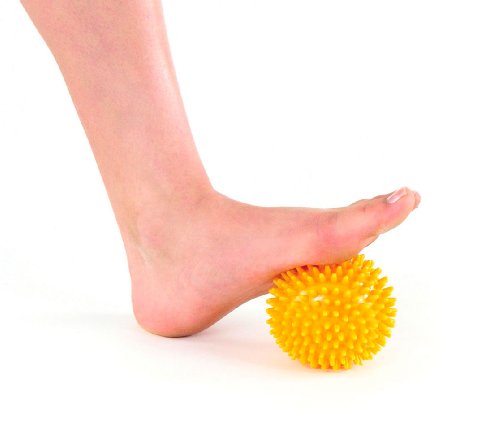Core Foot Exercises.
Strong foot muscles can help prevent injury, improve balance, reduce falls in the elderly and rehabilitate after trauma.
N.B. You can do these exercises holding on to the back of a chair for some of the standing exercises or maybe sit down if balance is difficult for you. Do not continue if you experience any pain.
Warm-Up
- Take your shoes and socks off and stand if you can. Start with rising onto your toes and slowly lowering again. You can put your arms out to help with balance. If you can’t do toe rises together, then do them on each foot separately. Don’t be tempted to rush, the slower you do this, the more challenging it is. (10x)
For the Arches
- Shorten your foot. To do this, start with a relaxed foot then contract the toes and draw the ball of the foot towards your heel. Hold for 5 seconds. Repeat this on the other foot. (5x)
For the Toes
- Sit on a chair. One foot at a time, imagine your big toe is a pen and trace each letter of the alphabet in the air (or on the floor if you can’t raise your foot). This can be lower case letters or capitals. Now do the same on the other foot.
- Grip a thin towel or pencil with your toes. Lift your arch up at the same time, heel on the ground. Repeat on other foot (10x)
- Big Toe Press-Ups. Sit with feet slightly apart. Try to lift one of the big toes without moving, curling the other toes. Repeat on the other side. (not as easy as it sounds!)
- Again, sitting down with feet flat on the ground. Feet together, place an elastic band around both big toes, then slowly pull them apart under resistance. (10x)
- Toe-Pulls. Hold one toe firmly and try to ‘pull it off’ gently. Rotate clockwise, then anti-clockwise. repeat for all 10 toes.
Balance and Foot Strengthening
- Practice standing on one leg on a flat surface. You may need to hold on to something to start. Count to 10 to start if you can, then try increasing this to 15 as you improve. Repeat on the other leg.
- When you are confident, introduce an uneven surface such as a pillow or cushion, or maybe try with your eyes closed.
- Advance to hopping from side to side on each leg (5x)
Calf Stretches
It is common to have tight calves, especially if you over-pronate, have bunions, etc. This can lead to foot issues such as Plantar Fasciitis. So, it is worth including a few calf-stretches in your exercise routine.
- Stand facing the wall, about one-2 feet away. Lean with arms stretched out. Place one foot behind the other making sure your back foot is flat on the ground. If you calves are very tight, you may find this hard to do, so don’t force it, work towards being able to do this. As you lean into the wall, you should feel a stretch in the calf but no sharp pain. Make sure your bottom is tucked-in. Hold for 10 then repeat on the other side. (5x)
- Toe Dips. Use a bottom stair or step. Maybe hold on to something if your balance is unsteady. Stand on the edge with your toes. Allow the heels to drop towards the ground. You should feel a stretch in the calves. You can progress to doing this one foot at a time which gives a deeper stretch. (5x)
Foot Massage
- Massage the arches from the heel to the ball of the feet using whatever you have -this can be a soft ball such as a tennis ball, spiky ball, a roller or my favourite, a squash ball. This will help relax the smaller muscles which can lead to foot pain.
Recommended Products
Finally, why not take the opportunity when you can to walk on grass or soft sand? Unless your feet are painful, you are diabetic or the sand is too hot, soft walking surfaces give the foot muscles a really good workout. I do not recommend barefoot walking on hard surfaces, however. This will eventually damage the feet.
- Stop any exercise if you are experiencing pain and consult your foot health professional.
- Whilst foot exercises will help strengthen your feet, you may also require other treatments such as orthotic insoles. Ask your foot health professional for more information.
This guide was put together based on my reading and information from LBG Medical and the American Podiatric Medical Association. For


